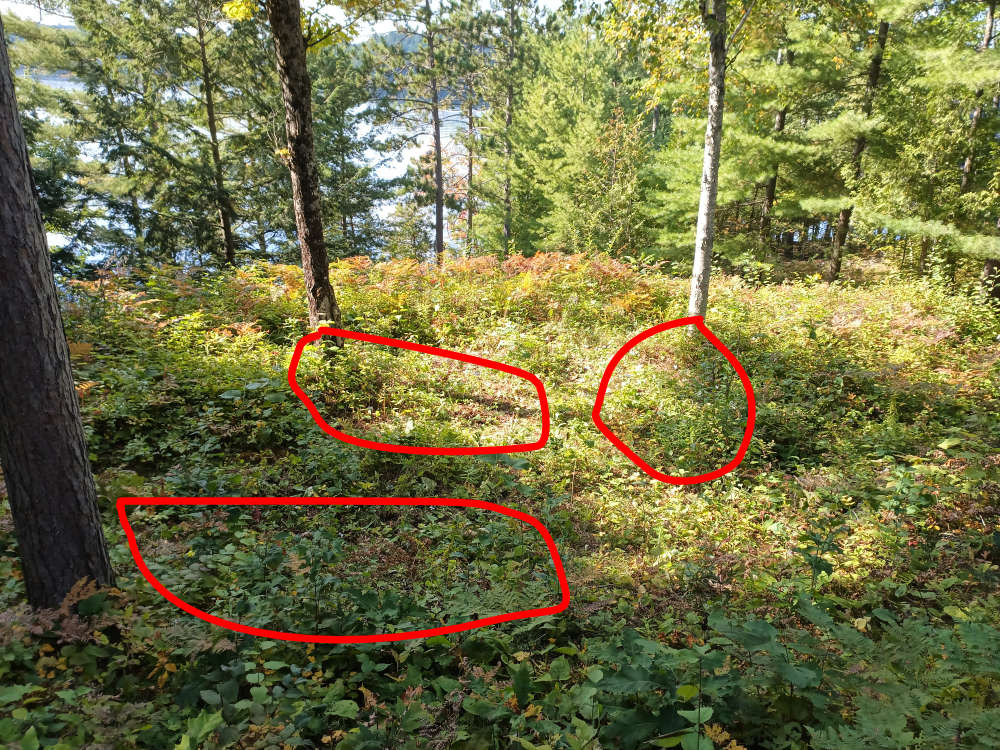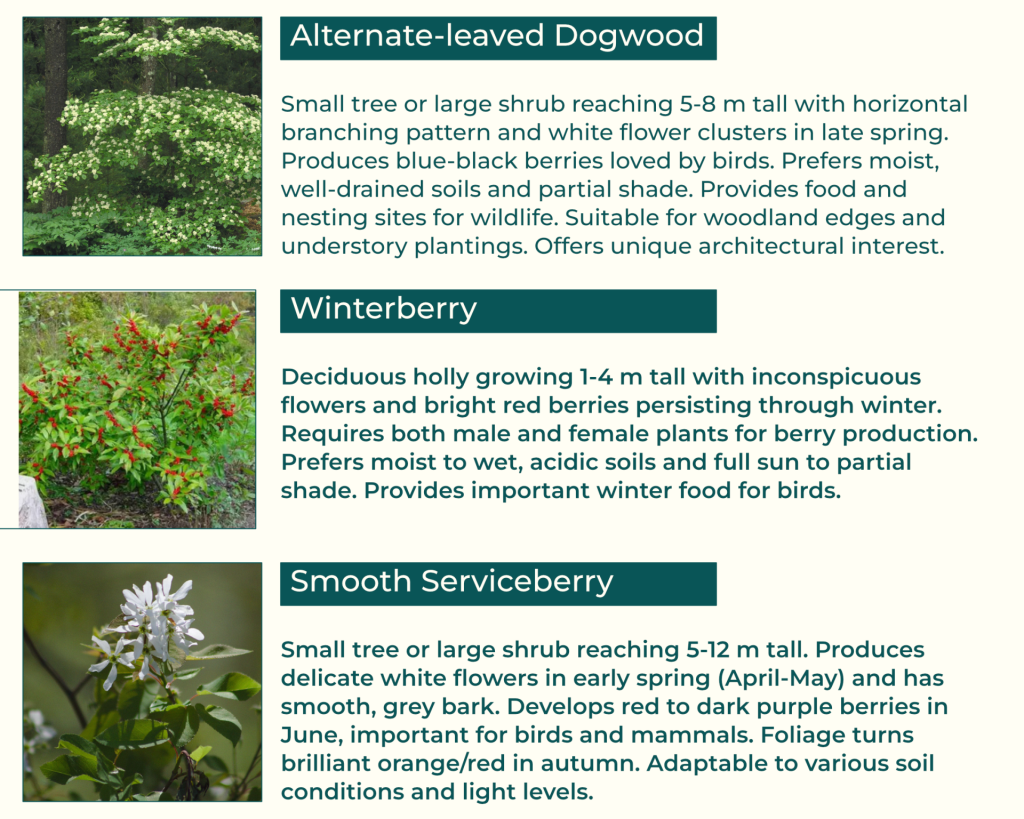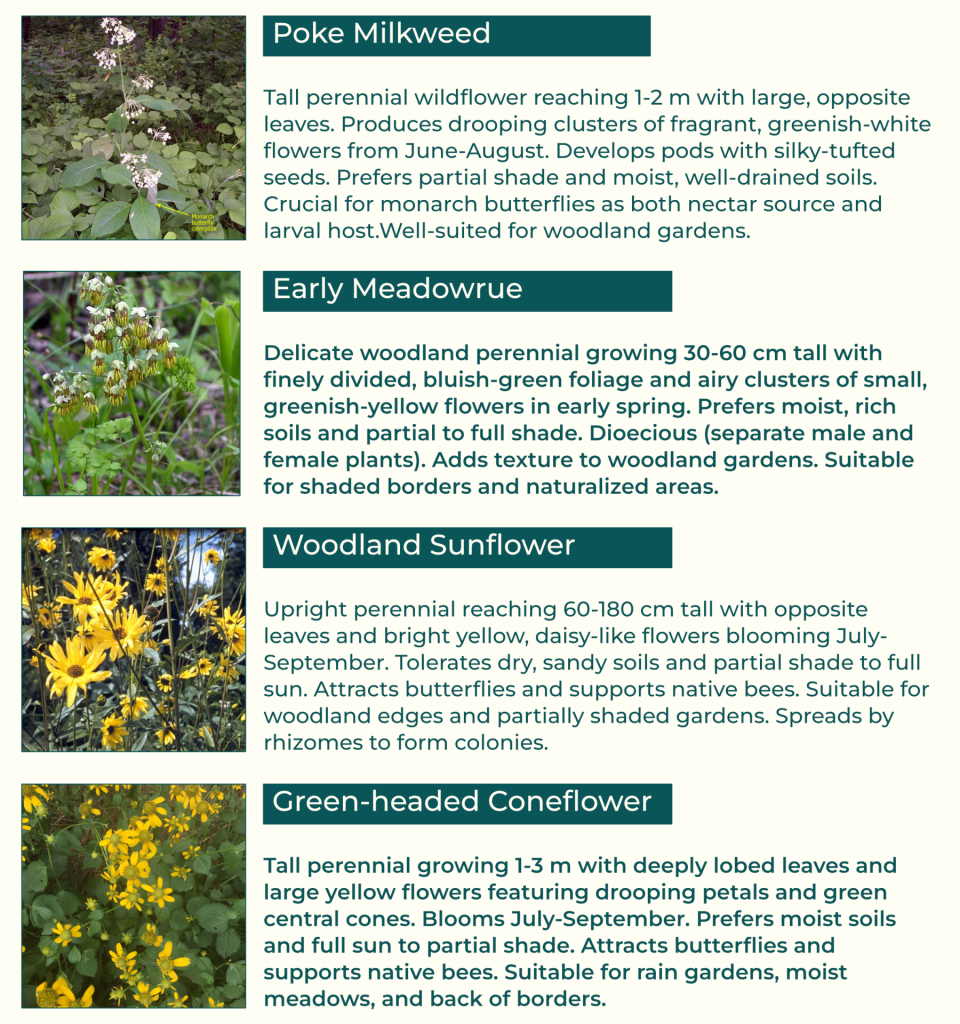Life on the Edge: Adding Native Plants to a Cottage Woodland Clearing
You don’t have to start afresh. Here’s an example of native plants added to a cottage woodland clearing.
The existing site
My clients had a flat space between their cottage and the lake, kind of like a stage, before the land dropped off towards the water.
While if left unattended, it would have reverted to forest, my clients had kept it in what I call a state of “arrested succession”. They’d removed tree and most shrub saplings, so the ground was covered in a wonderful array of native perennial plants. They had done a terrific job.

Here are some of the existing plants I found:
| Eurybia macrophylla | Big Leaf Aster | native |
| Fraxinus americana | White Ash | native |
| Aralia nudicaulis | Wild Sarsaparilla | native |
| Diervilla lonicera | Northern Bush Honeysuckle | native |
| Quercus gen | Oak | native |
| Cornus rugosa | Round Leaf Dogwood | native |
| Solidago | Goldenrod | native |
| Maianthemum racemosum | False Soloman’s Seal | native |
| Toxicodendron radicans | Poison Ivy | native |
| Trifolium pratense | Red Clover | non-native |
| Hypericum perforatum | Saint John’s Wort | native |
The concept
My clients came to me because they wanted to enhance the site. They wanted more interest, more flowers, more colour, and more variety.
My role was to keep what they have, to add more plants and to help them manage the area in future to enhance what was there and what I’d added.
The aim was to capture the moment between “old field” (the term for a forested area that was cleared) and forest. Apart from the existing trees, the area will be dominated by herbaceous perennials. A handful of additional shrubs were added to mimic the beginnings of a forest understory and to add visual appeal.
The details
I divided the space into three areas to focus on increasing the diversity of those areas. Each of the areas contains the same herbaceous species as the others, for visual appeal through repetition. Each area has between five and eight specimens of each species. Species compatibility with the existing vegetation and with the new species with regard to height above ground, root structure, growth behaviour, and bloom time and colour were considered.
In addition, I added three shrubs to the planting. These have two functions: they will enhance the “edge effects” of the site – edges are biodiversity hotspots. They would also add visual appeal by bridging the height difference between the herbaceous layer and trees, as well as providing flowers in spring and berries or colourful foliage in fall.

The plant list
Shrubs

Herbaceous perennials


The future
Managing this area isn’t like managing a traditional garden. Instead, what we are doing is gently
steering it, much like my clients had been doing the past few years.
We want to keep the landscape at its current stage of succession while at the same time allowing
the new plants to flourish.
To keep it at its current stage of succession, we will remove any trees and shrubs that get too big. They can either be pulled or simply cut to the ground. If we cut them to the ground, they will sprout again, but we can easily keep cutting them. That causes less disturbance than pulling them (and is easier on the back!). Disturbance is what opens up the ground to weeds and invasive plants – we want to avoid that as much as possible.
To allow the new plants to flourish, it is important to make sure they have access to light. We will remove
any foliage that is shading them. We can just pass through the area once every couple of weeks. I marked each group of plants with a metal label so we can recognize them. Each group contains either five or eight specimens.

This is a project that will develop over the next few years. It will start by protecting the new plants, but then they will establish themselves, adding much more variety to the site.
I will be there every step of the way and look forward to sharing updates and pictures here.
